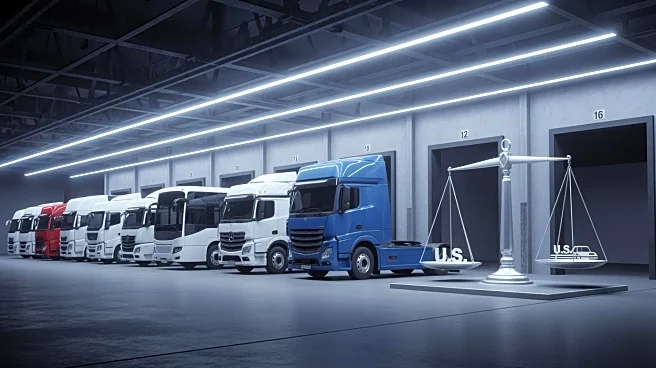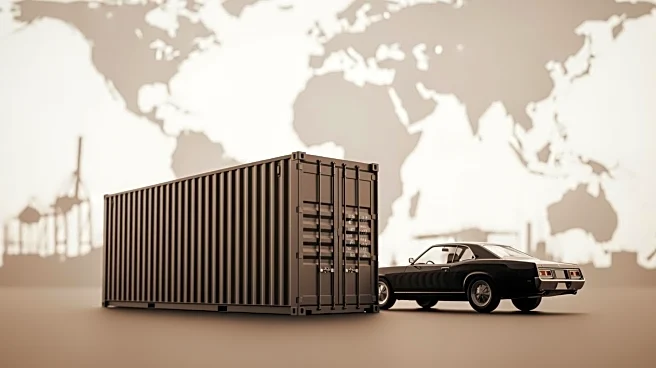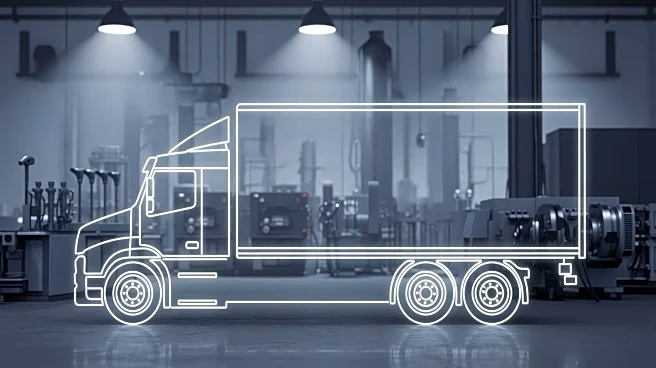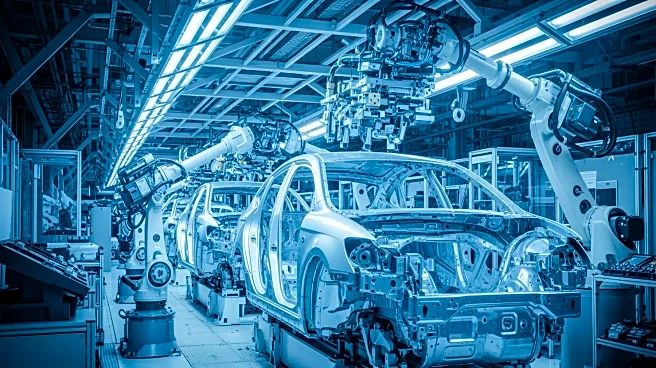What's Happening?
President Trump has announced the imposition of new tariffs on imported medium- and heavy-duty trucks and buses, set to take effect on November 1. The tariffs include a 25% levy on trucks and a 10% levy on buses, including
school buses and motor coaches. This move is part of a broader strategy to protect domestic manufacturers and encourage automakers to increase production within the United States. The White House has also extended tariff relief programs for major U.S. automakers, allowing them to avoid stacking tariffs on auto parts that cross borders multiple times during production. This extension is designed to support domestic vehicle production and maintain high-paying jobs for American workers. The administration is also working on an import adjustment offset program to incentivize engine manufacturing in the U.S.
Why It's Important?
The new tariffs and extended relief programs are significant for the U.S. auto industry, which has been lobbying for measures to mitigate the impact of tariffs on production costs. By imposing tariffs on foreign trucks and buses, the administration aims to level the playing field for domestic manufacturers. However, these tariffs could lead to increased costs for consumers and potential trade tensions with countries affected by the tariffs. The extension of relief programs is crucial for automakers like Ford, which faces a substantial tariff bill. The administration's actions reflect ongoing efforts to reshape trade policies in favor of domestic production, which could have long-term implications for the U.S. economy and international trade relations.
What's Next?
The tariffs are set to be implemented on November 1, and the administration will continue to engage with automakers to refine trade policies. The White House is also exploring ways to attract more foreign and domestic companies to relocate production to the U.S. The outcome of these policies will depend on negotiations with industry stakeholders and potential responses from international trade partners. The administration's focus on domestic production may lead to further policy adjustments aimed at strengthening the U.S. manufacturing sector.












